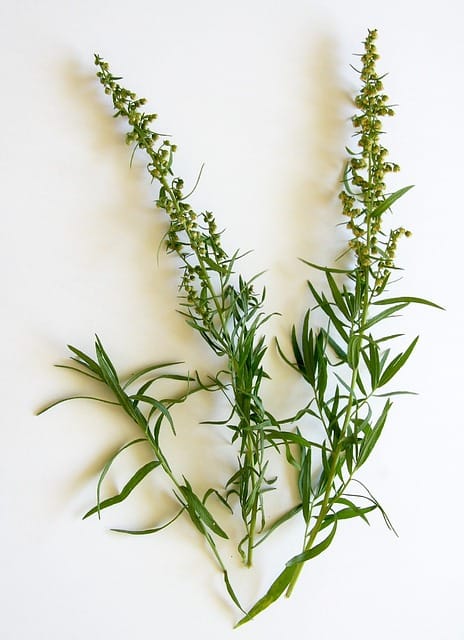You can certainly combine tarragon and basil in your culinary creations. Tarragon is known for its distinct anise-like flavor with hints of sweetness, while basil offers a sweet and slightly peppery taste. When used together, these herbs can create a delightful flavor profile that adds depth and complexity to your dishes.
The combination of tarragon and basil works well in a variety of recipes, including:
- Meats
- Salads
- Pasta Sauces
- Salad Dressings
- Herb Butter
The pairing of tarragon and basil allows you to experiment with different flavor combinations, adding a touch of freshness and complexity to your dishes. Adjust the proportions according to your taste preferences and the specific recipe you are preparing.
Let’s take a closer look at how to combine tarragon and basil in your cooking.
Dishes That Combine Tarragon And Basil
Tarragon and basil are both aromatic herbs with distinct flavors that can complement each other in various dishes. Here are some dishes that combine tarragon and basil:
- Herb-Infused Butter: Create a compound butter by mixing chopped fresh tarragon and basil with softened butter. This herb-infused butter can be used to top grilled steaks, seafood, or roasted vegetables.
- Pesto: Combine basil, tarragon, garlic, pine nuts, Parmesan cheese, and olive oil to make a unique pesto sauce. Toss it with pasta, use it as a sandwich spread, or drizzle it over grilled chicken or fish.
- Caprese Salad: Enhance a classic Caprese salad by adding fresh tarragon leaves to the traditional combination of ripe tomatoes, mozzarella cheese, basil, and balsamic glaze. The tarragon adds an extra layer of flavor to this refreshing dish.
- Herb-Crusted Chicken: Create a flavorful herb crust for chicken breasts or thighs by mixing chopped tarragon and basil with breadcrumbs, Parmesan cheese, and a bit of olive oil. Coat the chicken with the mixture and bake until golden brown.
- Herb-Infused Vinegar: Make an herb-infused vinegar by adding sprigs of fresh basil and tarragon to a bottle of white wine vinegar. Let it sit for a few weeks to develop the flavors, then use it in salad dressings and marinades.
- Grilled Vegetable Medley: Toss a variety of seasonal vegetables (such as zucchini, bell peppers, and eggplant) with olive oil, chopped basil, tarragon, garlic, salt, and pepper. Grill them until tender and serve as a flavorful side dish.
- Herbed Cream Sauce: Prepare a creamy sauce by sautéing shallots and garlic in butter, then adding heavy cream and a mixture of chopped basil and tarragon. Serve this sauce over pasta, chicken, or seafood.
- Tomato and Mozzarella Bruschetta: Upgrade traditional bruschetta by adding a sprinkle of finely chopped tarragon along with basil to the tomato and mozzarella topping. Serve it on toasted baguette slices.
- Herb-Roasted Potatoes: Toss diced potatoes with olive oil, chopped basil, tarragon, garlic, salt, and pepper. Roast them until crispy and aromatic for a delicious side dish.
- Herb-Infused Oil: Make an herb-infused oil by combining basil and tarragon with olive oil. Use this aromatic oil for drizzling over salads, grilled vegetables, or as a dipping sauce for bread.
These dishes showcase the harmonious combination of tarragon and basil, allowing their distinct flavors to enhance various culinary creations, from sauces and salads to roasted dishes and condiments.
Tarragon And Basil Comparison
| Criteria | Tarragon | Basil |
|---|---|---|
| Flavor Profile | Anise-like, slightly sweet | Sweet, slightly peppery |
| Aroma | Strong, distinct, with hints of licorice | Sweet and aromatic |
| Culinary Uses | Poultry dishes, sauces, dressings | Pasta dishes, salads, sauces, pesto |
| Pairings | Chicken, fish, eggs, mushrooms | Tomatoes, mozzarella, garlic, olive oil |
| Health Benefits | Antioxidant properties, aids digestion | Anti-inflammatory properties, vitamins |
| Availability | Widely available fresh or dried | Widely available fresh or dried |
| Storage | Store fresh tarragon wrapped in damp paper towels in the refrigerator. Dried tarragon can be stored in an airtight container in a cool, dark place. | Store fresh basil in a vase of water at room temperature. Alternatively, wrap it in damp paper towels and refrigerate. Dried basil should be stored in an airtight container in a cool, dark place. |
While both tarragon and basil are versatile herbs, they have distinct flavors and culinary applications. Tarragon has a unique anise-like taste that pairs well with poultry and seafood dishes, while basil offers a sweet and slightly peppery flavor that complements tomatoes and Mediterranean cuisine. Both herbs are widely available and can be used fresh or dried, depending on the recipe.

